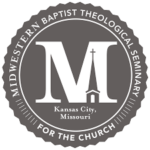Nurturing Delight
The Old Testament (OT) is big and can feel daunting, especially because it is filled with perspectives, powers, and practices that seem so far removed from Christians today. While we know that the psalmist found in it a perfect law that revives the soul, right precepts that rejoice the heart, and true rules that are altogether righteous (Ps. 19:7–9), we can struggle to really see how spending time in the initial three-fourths of the Christian Scriptures is really “sweeter than honey and dripping of the honeycomb” (Ps. 19:10). How can we nurture delight in the OT?
1. Remember that the Old Testament is Christian Scripture.
What we call the OT was the only Scripture Jesus had, and the apostles stressed that the prophets wrote God’s word to instruct Christians. Paul says, for example, that God’s guidance of Israel through the wilderness was “written down for our instruction, on whom the end of the ages has come” (1 Cor. 10:11). Indeed, “whatever was written down in former days was written for our instruction, that through endurance and through the encouragement of the Scriptures we might have hope” (Rom. 15:4).
With a firm grasp of the progress of salvation history, this accessible guide helps Christians interpret the Old Testament, see how it testifies to Jesus, believe that Jesus secured every divine promise, and understand how Moses’s law still matters.
Peter emphasized that “it was revealed to them [i.e., the OT prophets] that they were serving not themselves but you”—the church (1 Peter 1:12). This means that Moses and the prophets recognized that they were writing for a future community that would be able to know, see, and hear in ways most of Israel could not (Deut. 29:4; Deut. 30:8; Isa. 29:18; Isa. 30:8; Jer. 30:1–2, 24; Jer. 31:33; Daniel 12:5–10). In short, the OT is Christian Scripture that God wrote to instruct us. As Paul tells Timothy, these “sacred writings . . . are able to make you wise for salvation through faith in Christ Jesus,” and it is this “Scripture” that is “profitable for teaching, for reproof, for correction, and for training in righteousness” (2 Tim. 3:16). Old in OT does not mean unimportant or insignificant, and we should approach the text accordingly.
2. Interpret the Old Testament with the same care you would the New Testament.
To give the same care to the OT as to the NT means that we treat it as the very word of God (Mark 7:13; Mark 12:36), which Jesus considered authoritative (Matt. 4:3–4, 7, 10; Matt. 23:1–3), believed could not be broken (John 10:35), and called people to know so as to guard against doctrinal error and hell (Mark 12:24; Luke 16:28–31; Luke 24:25; John 5:46–47). Methodologically, caring for the OT means that we establish the text, make careful observations, consider the context, determine the meaning, and make relevant applications. We consider genre, literary boundaries, grammar, translation, structure, argument flow, key words and concepts, historical and literary contexts, and biblical, systematic, and practical theology.1 We study each passage within its given book (close context), within salvation history (continuing context), and in relationship to Christ and the rest of Scripture (complete context).
Many Christians will give years to understanding Mark and Romans and only weeks to Genesis, Psalms, and Isaiah, while rarely even touching the other books. When others take account of your life and ministry, may such realities not be said of you. We must consider how the OT bears witness about Christ (John 5:39; cf. Luke 24:25–26, 45–47) and faithfully proclaim “the whole counsel of God” (Acts 20:27), ever doing so as those rightly handling “the word of truth” (2 Tim. 2:15).
3. Treat properly the covenantal nature of the Old Testament.
The two parts of the Bible are called the Old and New Testaments because they each principally address the old and new covenants, respectively. We call Jesus’s Bible a testament because of its covenantal quality (testamentum is Latin for “covenant”). The OT addresses how God establishes and enforces his Mosaic covenant. And unlike the NT, which addresses a multinational church and was written in the common language of Greek, the OT was written to Hebrews in Hebrew. The OT bears a historical particularity that requires us to observe, understand, and evaluate carefully before application. To engage the OT as a testament requires that we recognize the distinct covenantal elements in the text and then consider how Christ’s coming influences our understanding of every passage.
4. Remember why the Old Testament is called old.
Building on the previous point, the OT details the Mosaic covenant of which Christians are not a part and that has been superseded by the new (Jer. 31:31–34). This fact requires that Christians carefully consider how Christ fulfills every OT story, promise, and law before establishing its relevance. Indeed, all history (Mark 1:14), every promise (2 Cor. 1:20), and the entire law-covenant (Rom. 10:4) point to him. While Moses’s instructions still have value for Christians, they do so only through Christ (Deut. 30:8; Matt. 5:17–19). Similarly, while every promise is yes for Christians, it is so only in Jesus (2 Cor. 1:20). He is the seed of Abraham (Gal. 1:16), and we become Abraham’s offspring only in Christ (Gal. 3:29).
As Christians, we must interpret the OT in light of Jesus’s coming. His person and work realize what the OT anticipates (Matt. 5:17–18; Luke 24:44; Acts 3:18), he stands as the substance of all OT shadows (Col. 2:16–17), and he embodies every ethical ideal found in both the law and wisdom (Rom. 5:18–19; 1 Cor. 1:30). We need to recognize that one of the OT’s fundamental purposes is to help us celebrate Christ and all God would accomplish through him. We must consider God’s whole counsel (Acts 20:27) in relation to the cross (1 Cor. 2:2).
5. Read the Old Testament through the light and lens of Christ.
Jesus supplies both the light and lens for reading the OT rightly. “Light” indicates that interpreting the OT properly is possible only for those who have seen “the light of the gospel of the glory of Christ” (2 Cor. 3:4). Only spiritual people can read a spiritual book (1 Cor. 2:13–14). “Lens” stresses that Jesus’s life, death, and resurrection disclose truths in the OT that were always there but not yet clear, at least to the majority (Rom. 16:25–26; 1 Cor. 3:14). Christians must recognize that there are significant continuities between the Testaments, such that many righteous people saw Christ from a distance (Matt. 13:17; Luke 10:24; John 8:56; 1 Peter 1:10–12). On the other hand, there are also significant discontinuities, in that the rebel population was not given a heart to understand (Deut. 29:4; Isa. 6:9–10), nor did God disclose the mystery of the kingdom until Christ came (Daniel 12:8–10; Mark 4:11–12).
The NT provides both the answer key and the algorithm for reading the OT in its fullness. By elevating Christ’s person and work, the NT signals the substance of all previous shadows, realizes the hopes of all previous anticipations, and clarifies how the various OT patterns and trajectories find their resolve. Through Jesus, God enables and empowers us to read the OT as he intended. Jesus is both our light and lens, and we read the OT rightly only through Christ and for Christ.
6. Consider how faithfully to see and celebrate Christ in the Old Testament.
Christians must seek to analyze and synthesize how the whole Bible progresses, integrates, and climaxes in Christ. Following the lead of Scripture itself, we can see and celebrate Christ from the OT in numerous ways.
- Consider how Christ stands as the climax of the redemptive story.
- Identify how Christ fulfills messianic predictions.
- Recognize how Christ’s coming creates numerous similarities and contrasts between the old and new ages, creations, and covenants.
- Determine how Christ is the antitype to OT types.
- Reflect on how Yahweh’s person and work anticipates Christ.
- Contemplate how Christ embodies every ethical ideal from OT law and wisdom.
- Instruct from the OT through Christ’s mediation—both through the pardon he supplies, which secures both promises and power, and the pattern of godliness that he sets.
7. Assess how the New Testament authors are using the Old Testament.
The early church devoted itself to the apostles’ teaching (Acts 2:42), and the whole church is built on the foundation of the apostles and prophets, with Jesus as the cornerstone (Eph. 2:20). Yet what Bible were the apostles using? They were using the OT, and they were making much of Christ from it. The NT is loaded with quotations of and allusions to the OT, and we should note the significance of these citations.
When Paul asserted to the Corinthians, “I decided to know nothing among you except Jesus Christ and him crucified” (1 Cor. 2:2), he did so as an OT preacher. And when he claimed that “all Scripture . . . is profitable” (2 Tim. 3:16), the “Scripture” he principally had in mind was the OT. You will help yourself and your people to cherish the whole counsel of God (Acts 20:27) and to appreciate the whole Bible when you take the time to wrestle with the NT’s citations of the Old.
Conclusion
The OT is Christian Scripture, and we can enjoy it best when we approach it through Christ and for Christ. The OT magnifies Jesus in numerous ways, and his person and work clarify how to rightly discern the continuities and discontinuities of salvation history. Through the light and lens that Christ supplies, Christians can enjoy the same God and the same good news in both Testaments. We can also embrace all God’s promises and rightly apply Moses’s law as revelation, prophecy, and wisdom. Start delighting in the OT through Christ and for Christ!
****
This post originally appeared at the Crossway blog. For more, see Jason S. DeRouchie, Delighting in the Old Testament: Through Christ and for Christ (Wheaton, IL: Crossway, 2024).







